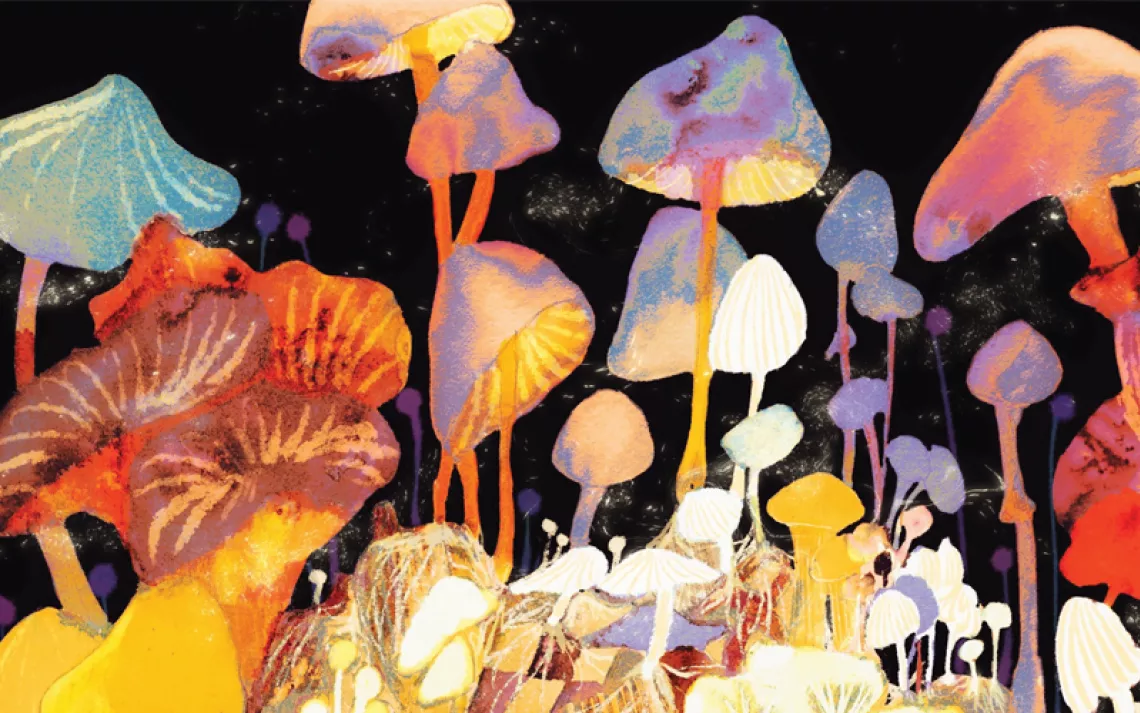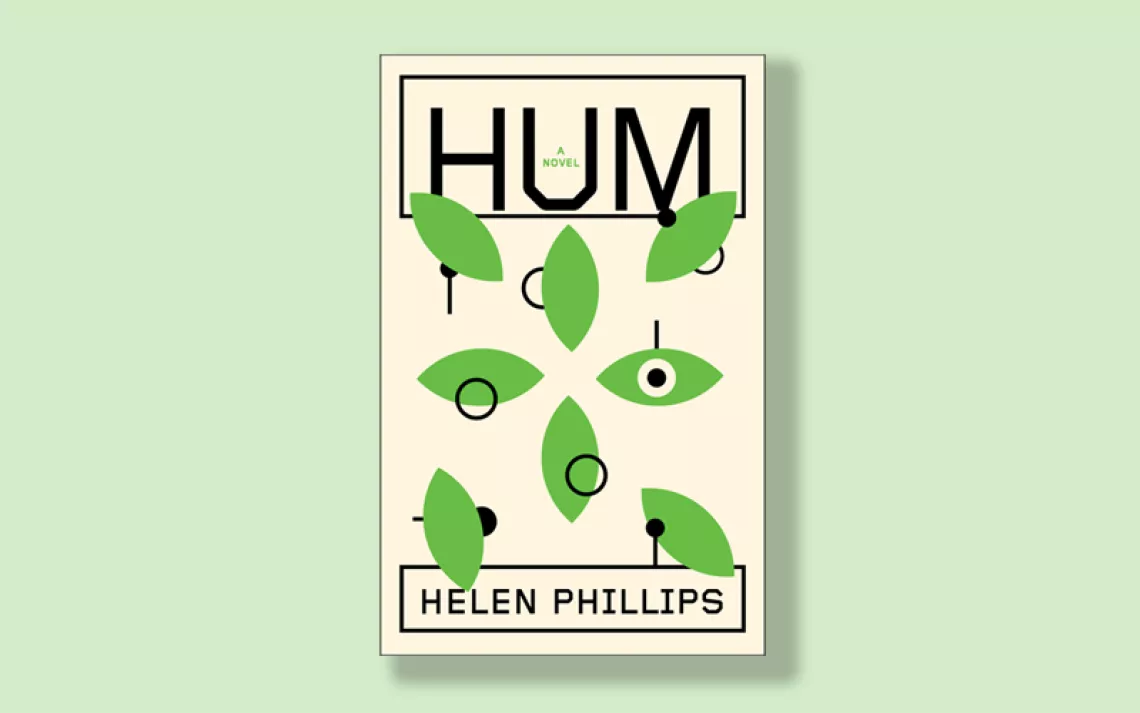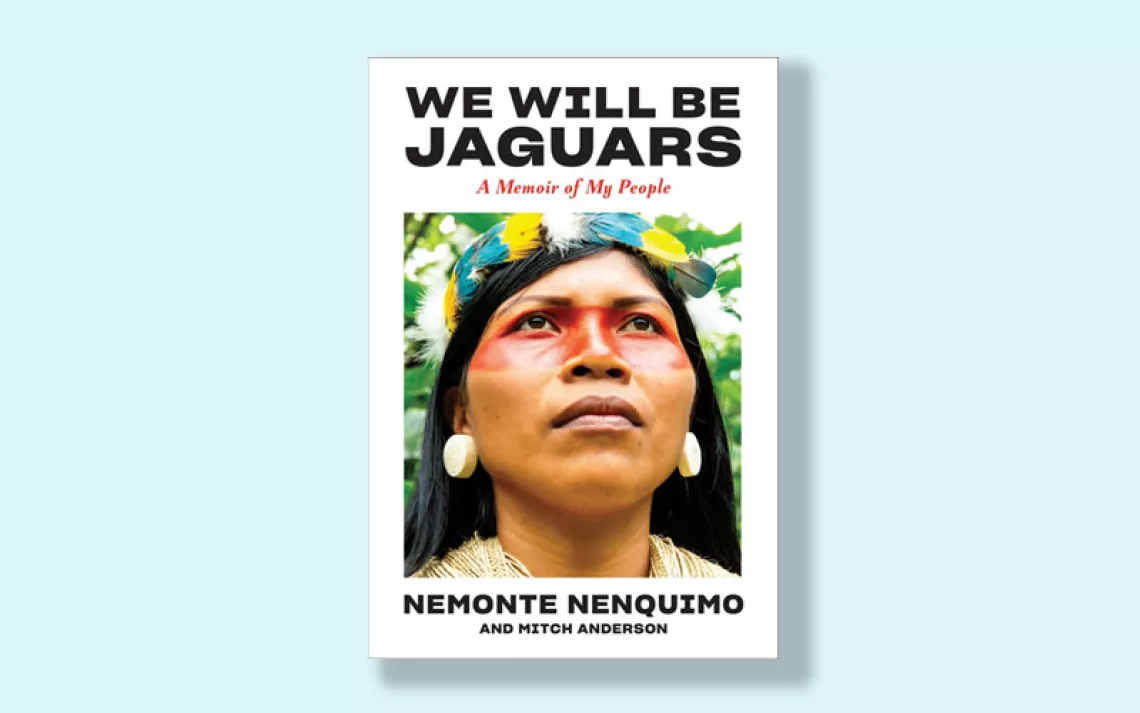4 Must-Read Books for Your Summer Reading List
These stories bring our relationship to the natural world into greater focus

Photo by iStock/artisteer
This year's summer season arrives at a time of record-breaking temperatures around the earth, along with news that levels of carbon dioxide—one of the greenhouse gases responsible for heating up the planet—are accelerating in the atmosphere. There couldn't be a better time to revisit our relationship with nature with a deeper level of inquiry about how we shape it, and how it shapes us. What would it be like to live in greater connection with the natural world? What aspects of our culture have steered us away from that? These four books have an answer.
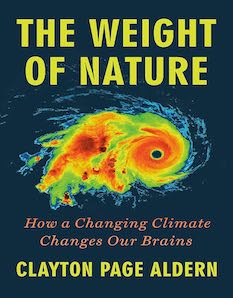
The Weight of Nature: How a Changing Climate Changes Our Brains
By Clayton Page Aldern
Dutton, 2023
Ego is, famously, one hell of a drug. At its worst, the overbearing ego can manifest as pathological narcissism or the cruelty of the sociopath. When I becomes everything, others shrink to nothing. But even the well-adjusted ego can sometimes trick us into thinking that we are each an island in the sea. It serves as a kind of carapace, an armor guarding the fragile self.
In reality, though, every ego is but one dot in an archipelago of others. We are, all of us, emmeshed in the world. We are linked to one another—and to the more-than-human world—in a great interconnected network that forms who we are, how we act, what we think. Maybe that sounds like warmed-over New Age mysticism or appropriated Indigenous wisdom. But the latest findings of modern science confirms it: Every individual is less like an armored tortoise and more like an amoeba, open to and shaped by forces beyond our thin skins.
The idea that the environment is constantly molding human behavior is the core argument of Clayton Page Aldern’s fascinating book The Weight of Nature: How a Changing Climate Changes Our Brains. These days, Aldern works as a journalist (he’s an editor at Grist), but before becoming a writer, he was trained as a neuroscientist at Oxford. In The Weight of Nature, he combines his scientific background with impressive explanatory-journalism chops to illustrate the many worrisome ways that climate change is warping our bodies and our minds. “This nebulous everywhere we call the environment tips your interior scales,” Aldern declares. “A changing world changes us from the inside out.”
(Before I go any further, I should disclose that I am mentioned in the book’s acknowledgements as “perhaps the first person to encourage” the author “to get serious about writing a book proposal.” You’re welcome.)
How, exactly, is climate changing us? To make his point, Aldern delivers a catalog of maladies. Hotter temperatures make it more difficult to think straight. Even a small increase in temps can depress students’ tests scores: “As temperature rise, opportunity falls.” Heat also makes people quicker to anger; according to one study Aldern cites, in this century climate change will cause an additional 22,000 murders and 1.2 million aggravated assaults. The stress and anxiety sparked by climate chaos can impact the unborn. Children who were in utero when Superstorm Sandy walloped New York City in 2012 have been shown to have especially high rates of anxiety, depression, and ADHD.
Climate change can even cause brain rot. Warmer temperatures are increasing the prevalence of a brain-eating amoeba (Naegleria fowleri) in lakes—with lethal, tragic consequence. Blooms of cyanobacteria—caused by the overuse of fertilizer but exacerbated by higher temperatures—have been shown to contribute to Alzheimer’s-like brain disease in dolphins. A parallel finding has frightening implications for human communities. Neighborhoods located on lakes with frequent cyanobacteria blooms have disproportionately high incidences of the neurodegenerative disease ALS. “Climate change is mapping an entirely new topography of neurotoxin exposure,” Aldern writes.
What Aldern calls this “Pandora’s box of horrors” would be unbearable to get through were it not for the author’s winsome voice. He’s a self-described romantic, unafraid to put his heart on the page, but he’s also often an ironist. Parenthetical quips and sardonic asides keep the prose from tipping into the ponderous. A snippet: “Rabies. Huh. I had indeed more or less forgotten about rabies.” He has the good sense to know when he may be pushing the reader’s limit. “There are more,” he writes of brain-eating pathogens. “I will stop. I know it’s getting repetitive.”
Every author has their own intentions, but it’s the reader’s prerogative to take what they will from a text. My own takeaway from The Weight of Nature is that Aldern’s book can serve as a powerful rebuttal to the fantasies of the artificial intelligence crowd. In chapter after chapter, Aldern brings us back to the fact that the workings of the mind are inseparable from the functions of the body, along with the environment the body is situated within. “Cognition is embodied,” he writes at the beginning of the book. “The stuff of thought is physical stuff.” Nearly 200 pages later, he declares, “Sensing the world is the most important part of making sense of it.”
AI may, eventually, prove itself able to reason. But an intelligence bereft of a body will never, ever to able match the complexity of human thought. An organism that can’t feel, can’t truly think. If cognition is embodied, then consciousness is too.
For anyone worried about the consequences of climate chaos, there’s a consolation of sorts embedded in the physicality of cognition. We may not be able to think our way out of cascading environmental crises, but we may be able to feel our way forward to a more sustainable way of living. After Aldern's long litany of terrors, this insight allows him to end on a high note. “Earth is hurting, and empathy means hurting with it,” he writes in the book’s epilogue. “The weight of nature is an anchor, and it binds us to this world.” —Jason Mark
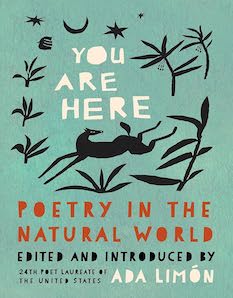
You Are Here: Poetry in the Natural World
Edited and introduced by Ada Limón
Milkweed Editions, 2024
“It’s no secret that when I am trying to find myself, trying to ground myself, I stare at trees,” writes Ada Limón in the introduction to You Are Here: Poetry in the Natural World. Reading this book under the Chinese elm that spreads dappled shade over my yard through the increasingly fiery summers, I sighed and looked up, and may have said aloud, “Me too, Ada.”
Limón is a poet we turn to when we want language for the complexity of being in this awful, beautiful world. As the 24th US poet laureate, she has made climate crisis and the environment her central concerns. This anthology is connected to her signature initiative, a poetry-in-the-national-parks project of the same title. The 52 contemporary American poets commissioned for the book have given us a group of capacious, necessary new poems that speak to nature as we experience it right now.
If you think of nature poems as gentle, apolitical, and pretty, this anthology might change your mind. Poets of the past often looked to the natural world to talk about innocence, beauty, religion, and mortality. Those themes haven’t gone away, but the poems in You Are Here also engage with the impact of humans on nature and the fraying of our ties to the nonhuman world. Jason Schneiderman’s poem “Staircase” asks, “And oh my God, are you as exhausted as I am from grieving the planet?” while Paisley Rekdal writes in her poem “Taking the Magnolia,” “Always / is not a word / we are allowed / to use anymore / about anything.”
The reality of all that’s intertwined with our encounters with nature is on display here in beautiful ways. Carrie Fountain’s “You Belong to the World” embraces the messiness of existence, telling us, “You belong / to the world, animal. Deal with it.” A poem written collaboratively by three Native Hawaiian poets mourns ecological change but also shows a community coming together after the destruction of the Maui wildfires: “Watch us feed each other. / Watch us make our own supply routes / from flatbed trucks, jet skis, and boats” (“Aia i hea ka wai o Lahaina?” by Brandy Nālani McDougall, Dana Naone Hall, and No‘u Revilla).
The forms and styles of these poems are as various and unique as nature itself. They range freeform across the page or draw on traditional forms like the sonnet and villanelle. There are short epigrammatic poems and long ones in couplets or zigzag shapes or prose. Surreal and funny poems sit alongside serious, angry, or sad ones. There’s a poem written from the perspective of a pair of deer and one that imagines the poet as a giraffe.
In “To a Blossoming Saguaro,” Eduardo C. Corral addresses a cactus as a person, almost a family member. “Your shadow will outlive my father,” he writes, and also, “You have more rights than the undocumented: / I need a permit to uproot you.” The poems in You Are Here show, above all, that when we encounter the natural world, we bring along all our humanness: our ghosts and beloveds, our politics, our complicated histories and good intentions. Our limitations and our determination to keep trying to do better. —Chloe Martinez
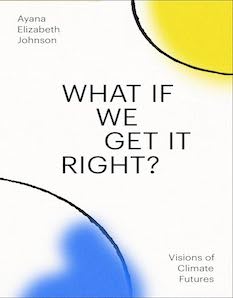
What If We Get It Right: Visions of Climate Futures
Ayana Elizabeth Johnson
One World, 2024
We live in a world where everyone, it seems, always has the answer. The internet has created a culture in which there is a “source” that can theoretically back up anyone’s position regardless of whether that position is factual (or at least fact-checked). And there’s a platform for anyone—i.e. social media—to advance that point of view and the source that can justify it.
What gets lost in a world where everyone has the answer is the art of asking questions. On the one hand, it’s good constructive communication: Asking a question first (even if you think you know the answer) signals an interest in someone’s take and point of view. It signals an ethos of partnership. The kind of questions we ask and how we ask them—such as specific, thoughtfully developed questions—can also catalyze a generative, truer form of inquiry that leads us to answers we may have not been expecting; answers that surprise us. That can point to a deeper understanding and way forward.
When it comes to climate change, there are some questions—“What can I do about it?” for example—that can leave people feeling overwhelmed. In What If We Get It Right? Visions of Climate Futures, Ayana Elizabeth Johnson invites us to bring this crucial dialogue back to the roots of where constructive, inspirational, even transformational conversations often begin: with thoughtfully informed, mindfully cultivated, spirited questions. “What if we look to nature for solutions?” she asks. “What if smaller farms can thrive?” “What if food systems are regional and regenerative?” “What if we revive rural communities?” “What if we revere biodiversity and photosynthesis?” “What if we are good neighbors to other species?”
What If We Get It Right is an attempt to realign the conversation about climate in a way that leaves readers feeling included, informed, and empowered about what it is and what we can do about it—and how partnership can lead the way. Even in its structure, the book is about partnership through conversation (at various points, entire chapters are transcripts of Jameson’s interviews with key thought leaders and scientists) and how, through coming together, we can solve what is now one of the most exigent existential challenges in the history of our species. It’s one she genuinely believes we can solve it. We just need to stop talking past each other, and start talking with each other, to find the way.
Consider the question “What if we look to nature for solutions?” Her answer is convincing. “The climate solutions that nature offers can comprise more than one-third of the CO2 mitigation needed to hold global warming to below 2°C—while also providing water filtration, flood buffering, healthy soil, habitat for biodiversity, and other forms of climate resilience,” she writes. Backing up that claim with science journalist Judith Schwartz, Johnson details these “nature-based solutions.” Among them, the way wildlife develop a natural equilibrium with the world that in turns helps regulate climate. Case in point: Reindeer grazing keeps shrub levels low—the kind of plants that absorb heat, increasing temperatures—which in turn helps native plants thrive—the kind that reflect heat, keeping temperatures cooler. Turning to food, Jameson asks, “What if food systems are regional and regenerative?” This activates a conversation about regenerative agriculture with Leah Penniman, cofounder with her family of Sou Fire Farm, who champions a “back to the land” element to our climate solution toolkit—such as no-till, semi-permanent raised beds, planting polycultures and cover crops.
Throughout the book, we are treated to Jameson’s own personal story, an inner-city kid who first wondered about the natural world while swimming with corals at five years old. And true to form, these stories come to us framed with questions. “Do you recall being a little kid, mouth agape at the magic of forests or dinosaurs or goldfish or the moon or ants? Do you remember the encompassing amazement?” she asks. It’s a question that brings us all into the conversation about protecting our planet, yes, but it’s also an invitation to consider how we might have forgotten the wonder of all that is around us.
“What if climate adaptation is beautiful?” Jameson asks at one point. What If We Get it Right has the answer. —Jonathan Hahn
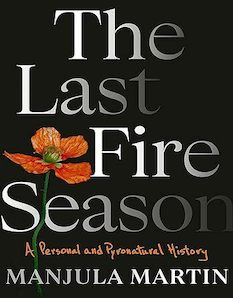
The Last Fire Season: A Personal and Pyronatural History
Manjula Martin
Pantheon, 2024
“It looks like the sun didn’t rise today,” Manjula Martin’s husband said to her as she woke up one morning. Martin peered out the window of her home in Sonoma County, California, to find “a scene in which it appeared to be neither day nor night. The redwoods were dreamscapes, umbrous black against a glowing red sky.” It was September 2020—the depths of the pandemic—and Northern California’s worst wildfire season to date. In the days that followed, Martin watched helplessly as a series of lightning-induced fires remade “the map of [her] childhood.” Ash rained over her garden, coating her carefully grown marigolds. In the once-quiet California woods, sirens wailed in the distance.
The wildfires brought forth a new form of climate denialism, one that looked more like grief than right-wing propaganda, Martin observes in The Last Fire Season: A Personal and Pyronatural History. During her neighborhood’s first evacuation warning of the season, Martin’s neighbor Frank, a man in his early 70s, lay shirtless on his patio “trying to absorb the orange heat of the smoke-filtered sun.” Frank’s denial of all that was happening around him was its own kind of grief, Martin observes. To Frank, “the neighborhood was the world.” The fires threatened the end of all Frank knew, and still, he lay sunbathing in their heat. Martin, too, navigates climate grief, or what she calls “solastalgia,” defined by Australian professor Glenn Albrecht as “a form of homesickness one gets when one is still at home.” Her descriptions of the burning landscape carry a nostalgic quality. The yard, she writes, turned “sepia toned and slightly out of focus,” like an old photograph.
In The Last Fire Season, Martin’s matter-of-fact updates on the status of the fires evolve into musings on California’s natural history and blissful childhood memories. She recounts playing among the quiet enclosure of redwoods at the teaching garden at the University of California, Santa Cruz, where her dad worked, and sitting at the tideline of a California beach as the waves washed over her. These memories offer the reader brief moments of relief from the omnipresent fires—but also act as reminders of what’s at stake.
Ever since a complication with Martin’s IUD, and a subsequent emergency hysterectomy, the author has suffered from chronic pain. As the wildfires ebb and flow, ranging from rampant to contained to extinguished, Martin’s pain does too. But the lessons she has learned from living with pain—to make beauty, even when it hurts—are also essential to living with fire.
As the burning subsides, fire poppies bloom across Northern California, radiant and orange against the postfire landscape. They’re “the most ephemeral of fire followers, born only from the conditions that a wildfire engendered,” Marin writes. The poppies’ existence means fire can be both “a killer and a caregiver,” part of a cycle of natural renewal. The fires, like Martin’s pain, will inevitably return.
Still, Martin has space for optimism. Learning to simultaneously love and grieve will inescapably be one of the great challenges of the climate crisis, faced by people around the world, living in suddenly unpredictable environments. Grounded in her lyrical prose and her contagious, deep-rooted love for her natural surroundings, Martin shares her journey in learning to do precisely that. —Claire Greenburger
 The Magazine of The Sierra Club
The Magazine of The Sierra Club
